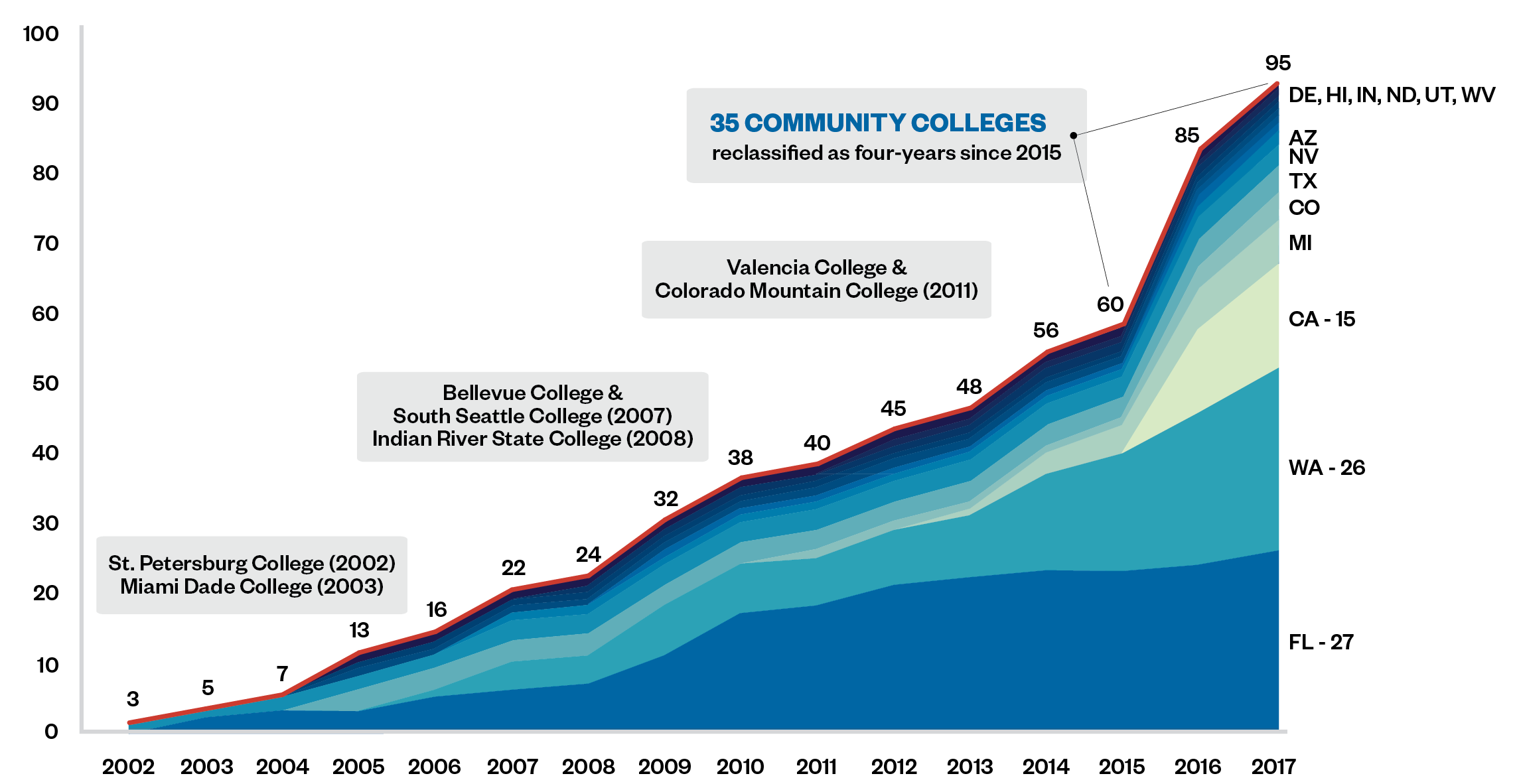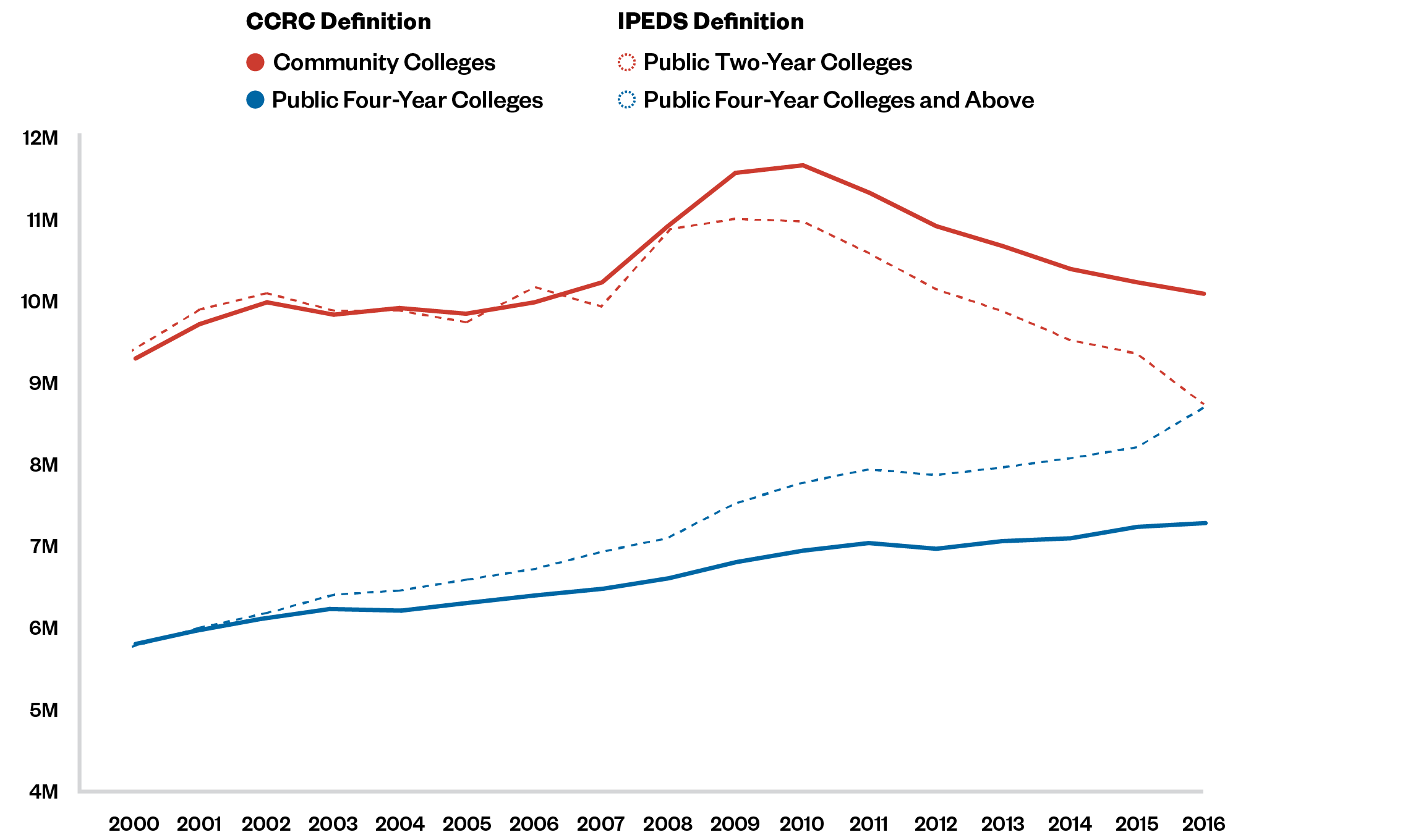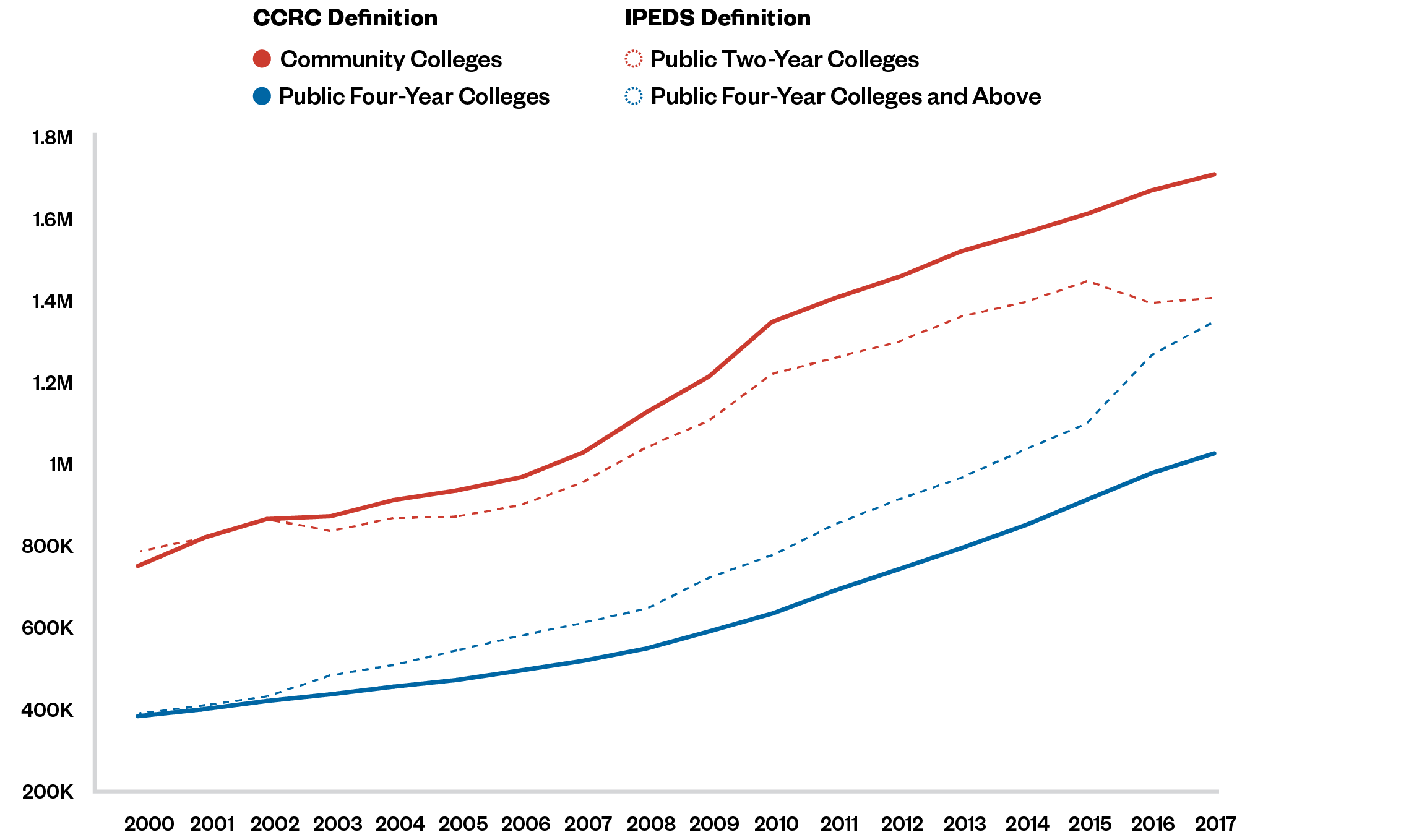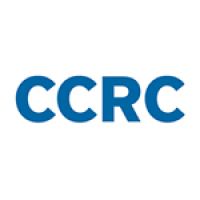By John Fink and Davis Jenkins
A recent Brookings Institution blog post on tuition-free college noted that, of all the states, Florida, Nevada, and Washington had the lowest proportion of their college-age populations enrolled at community colleges. Policymakers in those states who read the piece may have scratched their heads over why the estimates placed their states so low relative to others.
The problem is that this and many other studies use data that rely on a definition of “public two-year” colleges from the federal Integrated Postsecondary Education Data System (IPEDS), which is a set of interrelated surveys conducted annually by the National Center for Education Statistics. IPEDS gathers information from all postsecondary institutions participating in federal student financial aid programs, but the IPEDS definition no longer matches with the community college sector.
As more community colleges offer bachelor’s degrees, they are automatically reclassified in IPEDS as public four-year institutions, even though state and local policymakers, as well as the institutions themselves, still consider them to be community colleges. The result is that studies that rely on the IPEDS “public two-year” sector definition undercount these institutions and provide a misleading picture of community colleges in many states and nationally.
The undercount of community colleges and students is substantial. Between 2000 and 2017, 95 of the nation’s 1,000 or so community colleges were reclassified in IPEDS as four-year institutions, mostly as a result of the expansion of the community college baccalaureate available in Florida, Washington, and California. For example, most Florida community colleges (now called “state colleges”) award bachelor’s degrees; thus the IPEDS public two-year definition excludes all but one of them, including four winners of the Aspen Prize for Community College Excellence. Of the 95 (and growing) community colleges, 35—or more than a third—were reclassified in the last two years alone. Together, these 95 colleges enrolled 1.4 million undergraduates in the 2016-17 academic year—so nearly a million and a half community college students were instead counted as enrolled at public four-year institutions.
A Growing Trend: Community Colleges Listed as Public Four-Year Institutions in IPEDS

Reclassifying Community Colleges Tells a Different Story
Academic Year Headcount, All Undergraduates

Fall Enrollments, Hispanic Undergraduates

Based on the IPEDS sector definition, it seems that enrollment at public four-years was poised to overtake enrollment at community colleges (defined as public two-years) in the 2016–17 academic year. However, community colleges—as they are more commonly understood and as we define below—enrolled over 2 and a half million more students than public four-years did (see the middle panel in the figure above) in that year. Similarly, by the IPEDS definition, enrollment among Hispanic students in public four-year colleges was approaching Hispanic enrollment in public two-year colleges in 2017–18. Hispanic student enrollment has been increasing in both community colleges and four-year publics, but by our definition, community colleges still enroll many more students from this population (see the bottom panel in the figure above; note also that IPEDS provides data on student characteristics only for fall term enrollments, which are considerably less than full academic year enrollments, especially for community colleges.)
Why does this matter? Because community colleges play a vital role in U.S. higher education and society, it is important that policy research provide an accurate statistical picture of these institutions. The longstanding proxy for the community college sector—public two-year colleges—is increasingly inaccurate; researchers and policymakers should thus be careful to use data about the community college sector that precisely reflects what they mean. This is complicated enormously by the ubiquity of the IPEDS sector definition (e.g., it is a primary disaggregation used for illustrating long-term trends in the Digest of Education Statistics) and the lack of an alternative for identifying the community college sector in national datasets.
In CCRC’s research, we are now defining community colleges as public postsecondary institutions that are funded primarily by state and local sources and that offer mainly sub-baccalaureate (but also, in some cases, baccalaureate) education and training in a broad range of fields to meet community education and workforce needs. This is the definition that state and local policymakers and the colleges themselves tend to use, and it is similar to what AACC uses in creating its count of “public community colleges” in its popular Fast Facts flyer. Below is a state-by-state listing of the institutions we identify as state-supported community colleges, based on reviews of state higher education agency directories and community college association membership listings.
Download CCRC’s spreadsheet of institutions classified as community colleges (updated)
We’re not aware of another comprehensive national listing of institutions that employs this definition of community colleges, and we include the table and datafiles below as a resource to researchers and policymakers aiming to correct for the increasing trend of community colleges shifting sectors in IPEDS. We welcome feedback on this definition and request that you reach out if you do not see your community college on the list. Given that identifying the community college sector is a bit of a moving target—both due to the rise of the community college baccalaureate and to college openings, closings, and mergers—we at CCRC would like to establish a more accurate and open-access list based on our research and with input from the field. Such a resource will no doubt be critical to accurately assess the effects of the coronavirus pandemic on community college enrollments moving forward.
John Fink is a senior research associate at CCRC, and Davis Jenkins is a senior research scholar at CCRC.





